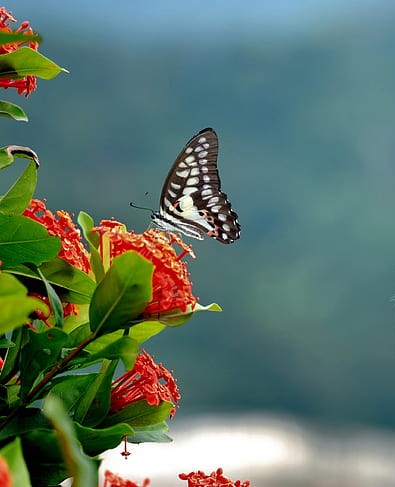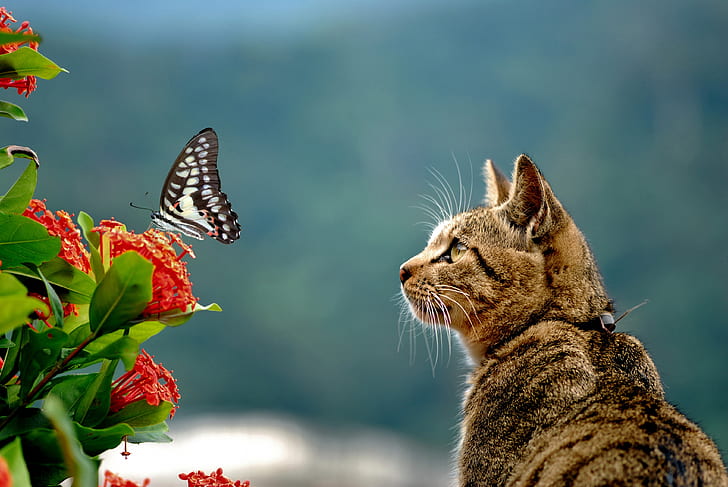
It’s amazing how much cropping an image can completely transform its meaning, altering the viewer’s perception and response.
Take for example my first image, a beautiful butterfly, enjoying a flower, on a sunny day. An image like this, may depict a serene moment, with an ever so delicate butterfly. Given this picture alone, the viewer would likely admire the butterfly and move on, not questioning what else is contained in the original photo.

Conversely, focusing solely on this kitty cat’s intense gaze, a completely different image is born. A sense of the animal’s predatory instincts engulf the photo leaving the viewer wondering what lies just outside of frame. Cropping like this, is a powerful tool in visual storytelling because it controls what the viewer sees and, just as importantly, what they don’t.
Finally, the complete image, containing the full context behind the shot. When shown in full, the image may depict a moment of curiosity, with the cat gently observing the delicate butterfly. The simple act of framing highlights how context shapes interpretation, proving that what is left out of an image can be just as powerful as what is included.


Hi Alexander,
I love this photo you chose to crop! And very cool that you included the crop of the butterfly and cat individually. It does change the photo completely when either subject is removed. I agree all three photos show different stories.
In the full photo, there’s a sense of peaceful coexistence, with the butterfly and cat in their natural surroundings. However, when cropped to focus on the cat’s intense gaze, the photo takes on a more suspenseful or even predatory tone, leaving the viewer curious about what’s just outside the frame. As for the crop of the butterfly alone, it gives a whole new sense of intimacy and fragility, with the delicate creature taking center stage. By removing the cat, the image feels more peaceful and focused purely on the beauty of the butterfly. This shows how even just isolating a subject can completely change the mood.
For other cropping options, a tighter crop on just the cat’s face or the butterfly’s wings could draw more attention to those details and enhance the emotional pull. A more dramatic angle or perspective could also make the photo feel more dynamic. Overall, I think this is a great example of how cropping can transform the narrative and emotions within a photo.
Hello Alexander,
Cropping can indeed work like a plot twist! Your butterfly image starts all peaceful and serene, with the butterfly just vibing in the sunshine. But once you zoom in on that cat’s intense gaze, it suddenly feels like we’re in a suspense movie; what’s lurking outside the frame? Once again, the rule of thirds never lies. I have to say, that cat is stunning! Somehow, from my point of view, the cat’s mind is overwhelmed by seeing such a lovely butterfly. Great work turning a peaceful scene into a thriller!
Hey Alexander, the picture you chose does have a lot of options for storytelling. The first crop of the butterfly creates a serene picture with the colorful flowers popping through. The second crop of the cat now allows the viewer to question what the focus of the cat’s attention is or what’s waiting on the other side for it. The crops create two completely different pictures. Another option for a different story could be a close-up of each animal. The story will lie in the appearance of the main focus and not the collective of the background and its action stance.